Your customers’ inboxes are probably stuffed with other marketers’ work. Unfortunately, it’s easy to get lost in the shuffle. Not every email will be opened, and even fewer will result in conversions. Yet despite this, email marketing remains one of the most effective marketing methods.
So, the question is: how do you ensure that more of your brand’s emails cut through customers’ crowded inboxes to see the light of day?
The key is to be strategic about your email campaign approach. In fact, there are formulaic methods you can follow to boost your click-through rates and conversions, as seen in some great SaaS marketing campaign examples.
By following a proven set of strategies, you can demonstrably maximize your engagement and conversion metrics. Simply incorporating factors like personalization, timing, frequency, and mobile-friendly design can drastically increase the efficacy of your next campaign—especially when implemented with the right email marketing solutions.
This article will show you how to use these simple marketing strategies to your advantage, whether you're a large enterprise, a startup, or small business.
Email Has a Higher ROI Than Any Other Marketing Method
You might be wondering which marketing channel is most effective in 2023. So before we dive into the five email marketing strategies we’ll cover in this article, let’s go over why this medium is an effective campaign vehicle in the first place. After all, marketing campaign planners in the digital age have so many different outreach methods to choose from.
Customers are now accessible through social media, SMS, snail mail, and email, just to mention a few of the available touchpoints. So, when you have this many options for your campaign, how can you be sure that email is the right choice for your brand?
The fact of the matter is that email is consistently outperforming other marketing channels. For instance, email marketing currently maintains an overall ROI of $36 for every $1 spent. Not to mention the fact that the channel is projected to see exponential growth in popularity among marketers. In 2020, the global email marketing market was valued at $7.5 billion, and by 2027 this figure is estimated to reach $17.9 billion.

Plus, these numbers are born out of how some of the most innovative marketing teams are leveraging email to lift their brand’s profile. For example, at Airbnb’s inception, they had an issue proving reliability for customers who were concerned about the safety of individually run vacation rentals. The company solved this perception issue by leveraging customer location data in their email campaign to offer social proof that other people in their area were utilizing the platform. Emails would highlight where travelers in the recipient’s location had stayed, therefore showing that these rentals were vetted.
Despite the exceptional ROI that email marketing generates, many companies are under-analyzing their campaign strategy KPIs. In fact, only 25% of companies believe they're adequately measuring their email marketing ROI. (This may come from not using adequate email marketing analytics tools, or not optimizing how you are using said tools.)
This oversight negatively impacts their marketing outcomes, as insight-based improvement is the best way to make the most of their email campaigns. However, this does present a revenue-generating opportunity for companies that are willing to put in the work. Marketers that incorporate strategic design elements and track the results have the power to boost campaign returns.

Despite the rise of other channels like SMS, social media, and affiliate marketing, email has the tightest hold on your customers. Yet, cutting through more of your customers’ crowded inboxes might take some creative solutions. So let’s review some proven email marketing methods to improve ROI and capture customers’ attention.
2023’s Top 5 Email Marketing Strategies
Now, there are a lot of different email marketing strategies competitors are using to make it in the cutthroat environment of your target audience’s inboxes. You’ve probably encountered a few in your time as a marketer. However, these strategies are more than just tips and tricks—they’re data-backed, proven methods to boost KPIs like engagement or email open and conversion rates.
Furthermore, these methodical approaches to email marketing campaigns are granular enough to touch on specific pain points that may be holding your brand back. For instance, often overlooked factors like culling email lists or targeted tactics to increase the perceived relevance of your email subject can yield measurable improvements over time, specifically by reducing unsubscribe rates.
The goal is to set you up with a proverbial toolkit of tactics you can implement in your next email campaign to generate better results. Of course, every brand is unique, and as the resident expert on factors like your company’s product messaging, target demographics, and campaign goals, some strategies may be more relevant to you than others. However, as a whole, this list aims to cover universal strategies that can be customized to fit specific branding requirements. Basically, as in most areas of marketing, there’s room for creativity here.
So, without further ado, let’s go over my selection for the five most impactful email marketing strategies to try in 2023, starting with the importance of personalization.
1. Personalize your emails
The rise of data analytics has transformed best practices across sectors, and email marketing is no exception. Companies now have a repository of detailed information on customers’ purchase histories and brand interactions, meaning businesses can now create profiles on individual customers. So, make sure you’re leveraging this information by customizing your outgoing messaging to better target the interests of the specific recipient.
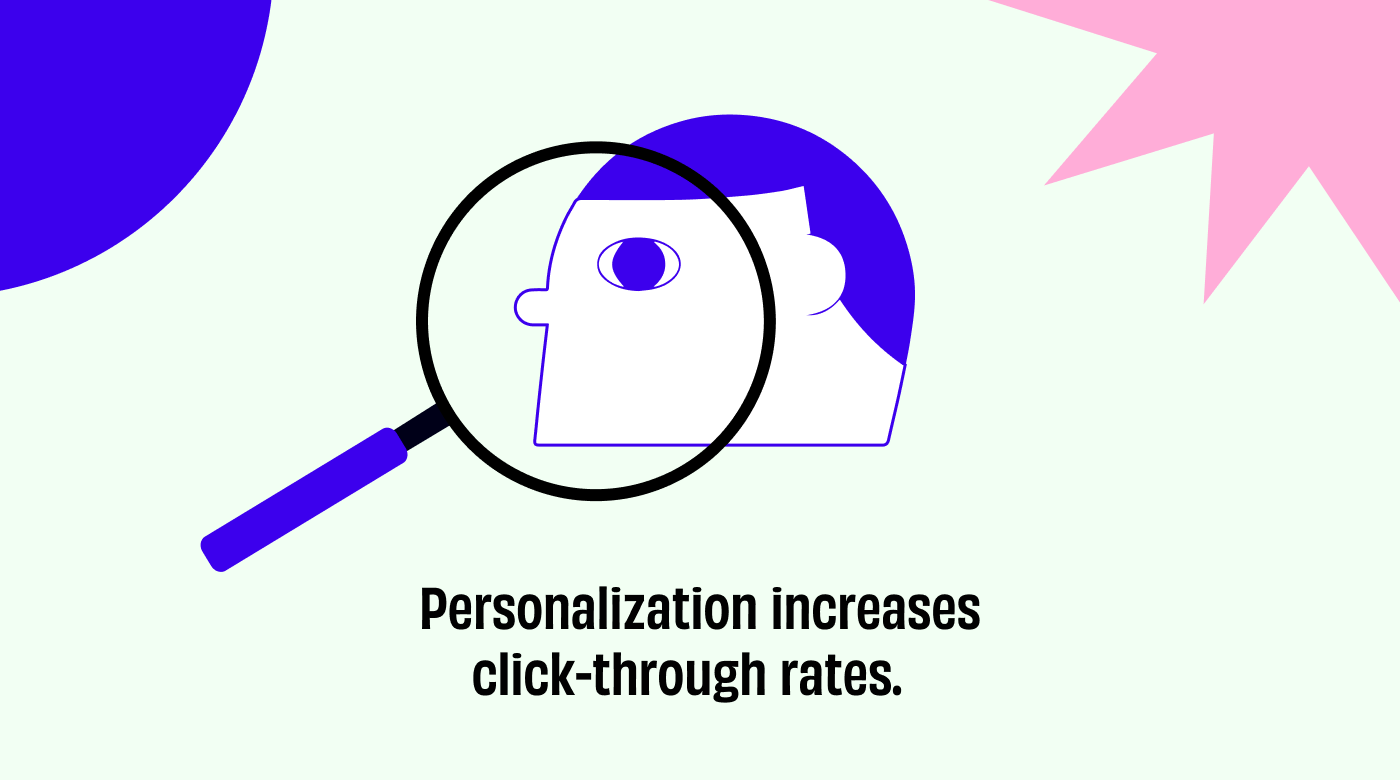
Personalization often boils down to customizing product suggestions, offers, coupons, or promotions using the collected data on a subscriber’s interests. This practice has been shown to significantly improve critical KPIs like click-throughs, unsubscribe rates, and conversions as the content of your branded communications feels more important, direct, and relevant to the customer.

Although of course, I’m not the first person to come up with personalization. In fact, you might already be doing a degree of mass data-backed customization. This is because the efficacy of the practice, particularly in increasing click-through rates, has led to widespread adoption among marketers. In fact, 89% of surveyed marketers see a positive ROI when they use personalization strategies in their campaigns.
Plus, it’s not just marketers behind the push toward personalized marketing. Customers have adapted to the new normality, with 71% of them reporting that they expect personalization. This fact has important implications for all marketing teams, especially those who haven’t yet adopted personalization as it indicates that staying competitive in the email marketing space will require a high degree of individualized messaging.

So, the numbers show that personalization is here to stay. But, if everyone is already implementing this tactic, the question is how do you improve upon the basic practice to gain a competitive edge. There are three key methods you can use to make your personalization measures stand out to your email list. I’ll go over each one, starting with the best practices for basic product personalization.
- Product personalization: Sending out mass offerings or product promotions is a waste. Regardless of what the product is, a segment of your email list will most likely be uninterested. This means generic messaging not only harms the campaign KPIs but also might damage the individual’s perception of your branded emails. The reality is that the more irrelevant communication a subscriber receives, the less they pay attention. So, make sure that product offerings are based on the customer’s order history.
- Segmentation: You might be wondering how to conduct effective product personalization. Email segmentation, you’ll find, is very appropriately named, as it describes the process of splitting your audience into distinct cohorts through your CRM. These “segments” of your audience may be divided by location, industry, order history, company size, or sales cycle. Email content can then be crafted to exactly address the needs, pain points, and offerings that a portion of your target audience wants from you.
- Trigger-based campaigns: Setting up your emails to respond to behavior-based triggers drastically increases the relevancy of your content. For example, if a customer clicks on a link, visits a web page, or makes a purchase it can set off a chain of prepared emails with content related to that action. Triggers can also be demographic-based like happy birthday emails, or time-based like re-engagement campaigns.
The results of personalization, when done well, can be astonishing. For example, SCI Solutions was experiencing difficulty cutting through the oversaturated seller market for medical software. So, in response, their marketing team developed a trigger-based campaign plan that incorporated high levels of both internal and external data on their prospects. The goal was to build trust over multiple months.
The SCI team created a lead scorecard that calculated the behavior-based triggers against personal data to create a score, which would then determine the level of engagement required for the resulting product offering in the next email they received. As a result of this personalization effort, SCI was able to derive a significant response increase and a resulting growth in opportunities.
Here are some of SCI Solution’s personalized email examples, note how each product offering is different:
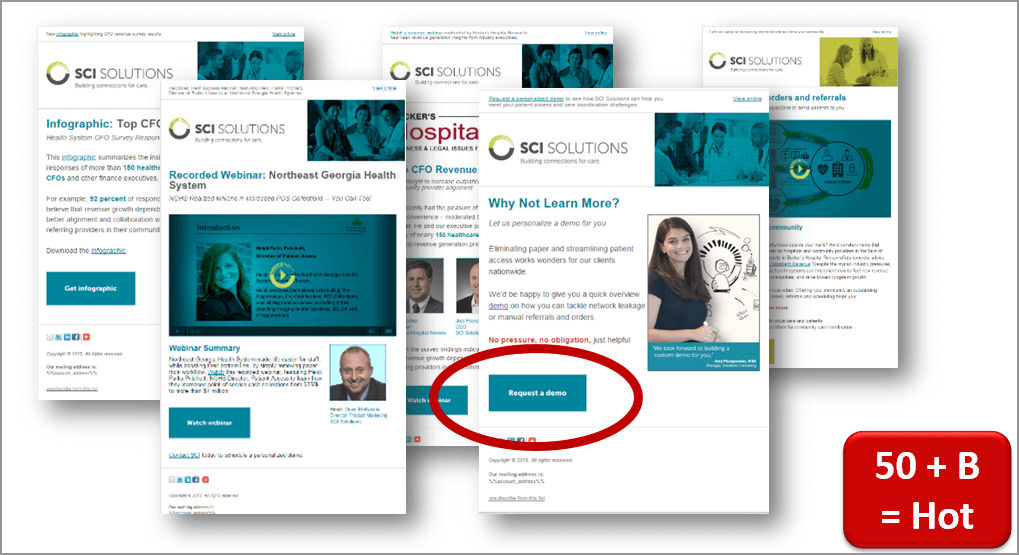
2. Improve your performance with A/B testing
A/B testing is a cyclical approach to improving campaign results. Basically, it’s the process of testing out an alteration of one variable in a marketing email, analyzing the results, and repeating the process to find the optimal design. This approach allows marketers to play with different elements of their email or campaign structure and come up with fact-based results.

Ecommerce email marketing strategists often use A/B testing to find the most impactful version of features like subject lines, copy, and the placement of certain elements like CTAs within an email. A/B testing has a plethora of uses when it comes to increasing conversions and engagement. Email marketers can also use A/B testing to boost factors like their web traffic and conversion rates while decreasing negative outcomes like cart abandonment and bounce rates. Basically, the testing format allows you to isolate any conceivable individual design factor and improve it.

To illustrate how variation testing can lead companies to hone in on the most engaging version of their marketing materials, check out the differences between Humana’s landing page banner “control” and its successful “treatment” below. Through this A/B tested redesign, Humana managed to increase their click through rate on their landing page banner by 433%.
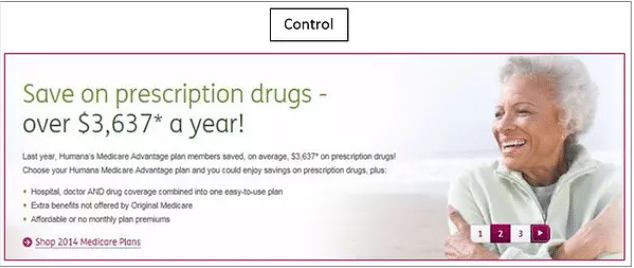

The fact of the matter is that there’s no way to know what elements of your email design could be dragging down your campaign ROI without measuring the efficacy of each factor. A/B testing is one of the most cost-effective ways to track and analyze data regarding your customers’ response to your campaign, which is why 75% of the top 500 internet retailers use it.
So if you’re sold on the importance of A/B testing, here’s a step-by-step guide.
Here’s how you run an A/B test:
- Before: Prior to conducting your A/B experimentation, you need to set targeted goals for your test. This means nailing down details like what independent variable you want to test. For instance, you might consider factors like copy, visuals, or subject lines. Then, set a target metric you want to reach by testing this variable and determine the level of statistical significance you want to achieve. From there, simply generate two versions of your email. The first will be a control, and the second will have the independent alteration you want to test. You’ll split your audience evenly and send your two emails.
- During: It’s important to note that in order to achieve reliable results you need to test both versions of the email at the same time. Factors like the month, week, or even day can impact the email’s results, which is why A/B testing happens simultaneously. Also, make sure you’re running the test for long enough to gather significant results. Of course, the appropriate length of the test will be different for every company. For instance, businesses that don’t generally receive much web traffic will need to stretch out the timeline further to truly track the impact of little variations. Finally, you may want to consider asking subscribers to submit feedback during the A/B test. This can give you valuable information on what’s driving statistical anomalies during the analysis phase.
- After: Once you’ve collected the data from the test, it’s time to conduct an analysis of your results. Firstly, it’s important to note that you’ll probably garner some unexpected outcomes, but try to hold onto your predetermined goal metric as you go through the results. For example, if you were aiming to increase conversions, don’t get sidetracked by open rates. Also, don’t be concerned by a lack of significant results as this indicates that the variable you tested is ultimately irrelevant in terms of the metric you were tracking. Finally, if you’ve pinpointed a statistical improvement, don’t stop there. A/B testing is an ongoing process of improving messaging to meet the expectations of your ever-shifting audience.
3. Make your emails mobile-friendly
Many of your customers access their inboxes through their mobile devices. In fact, most of them do, as evidenced by Apple iPhone’s rank as #1 in email market share. Despite this, many companies still aren’t sending mobile-friendly emails.
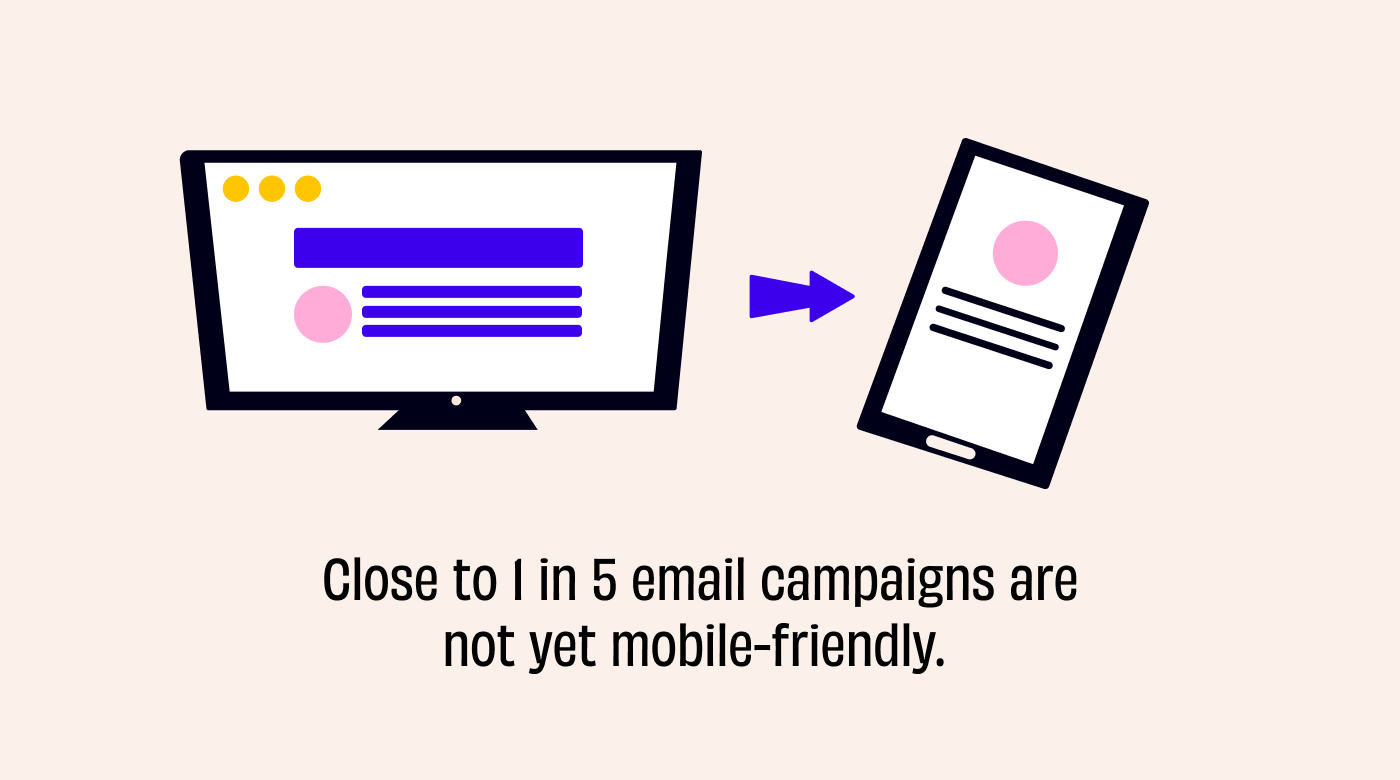
In the current state of email marketing, nearly 1 in 5 campaigns aren't mobile-friendly. This might seem counterintuitive, as meeting the customer where they’re at is often essential in marketing, but it’s important to remember that smart mobile devices are still a relatively new technological advancement. Although soon, all companies will need to adapt to the new reality that many of their subscribers check their emails on their phones.
Plus, the move toward mobile email access has further implications for companies that are already optimizing for phone viewing. The prevailing trends in email marketing may indicate that in the future business owners should consider taking additional steps to cater to mobile-first subscribers.

Obviously, an email designed for a computer screen can look overcrowded at best on a mobile device and increase the chances your email blast marketing campaign is moved to the bin. However, at worst, the functionality of CTA buttons can also be compromised by their scale. Now, there are both practical and aesthetic concerns when it comes to making emails mobile-friendly. So, let’s take a look at the difference between a mobile-friendly email, and its overcrowded counterpart:

See how the unoptimized design in this photo appears cluttered and unattractive? Your customers are more likely to interact with the mobile-friendly design. So, how do you design emails for mobile access? Well, here’s how to configure your emails for mobile inboxes:
- Responsive email designs leverage CSS media queries to automatically adjust email content to fit the users’ screen size. This makes it easier for email marketers to ensure that their messaging remains impactful regardless of where customers are touching base with the brand.
- Concise copy is generally best practice for email marketing across the board. Although it’s particularly important when attempting to avoid overcrowding on smaller screen sizes.
- Subject line lengths should remain short so mobile users can still be struck by your initial bid for attention.
- Preheader text gives you a little extra space on the mobile users’ screens to re-enforce your subject line messaging.
- Highlight the CTA to make it easy for mobile subscribers to click through.
- Space out links so that it’s easy for customers to click on specific items in your email without accidentally heading to the wrong page.
- Finally, A/B test your mobile designs!
4. Know which types of emails to send
One of the most fundamental email marketing strategies you can use to easily boost your KPIs is building your campaign around several effective messaging structures; namely three established categories: transactional, promotional, and lifecycle. In utilizing these email marketing categories, not only will you be able to leverage an established framework to make campaign planning easier, but you’ll also be able to tap into their proven success. So, to help you make the most of each email you send, let’s go over each category.

- Firstly, the simplest category is the promotional email, which is designed to boost the profile of a specific product, increase brand awareness, or highlight special offers and discounts. Personalization measures are especially important when it comes to promotional emails. Customers can feel spammed if frequent and personally irrelevant product offers are filling up their inbox and this may yield inactive subscribers. So, using promotional messages in conjunction with other email marketing efforts like customer purchasing data and audience segmentation will help you overcome these challenges. Also, if you can include discounts, deals, or offers, you further add value to your messages, and therefore can build more interest in your promotional emails over time.
- Now, let’s talk about transactional emails, which boast markedly high open rates of between 40–50%. This email category is generally triggered by an action from the customer such as a purchase. The customer will be expecting to receive messages like an order confirmation, shipping notification, and a customer feedback email. This email category naturally captures customers’ attention. So, how do you capitalize on this? Along with the expected information the customer is expecting, make sure to include enticing deals, upsells, brand information, and similar product suggestions.
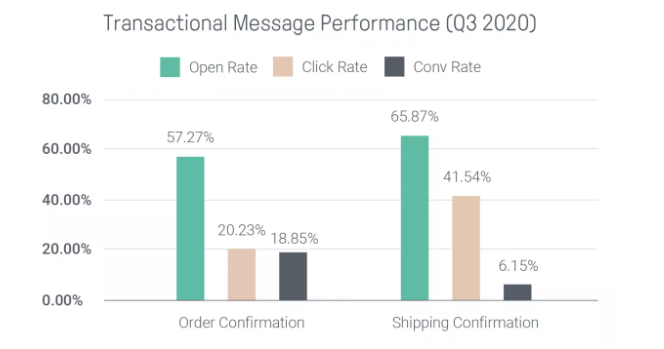
- Finally, the lifecycle email is a structured way of interacting with customers throughout different stages of their relationship with your brand. This category is designed to keep subscribers active throughout their time as your customer. Common implementations include welcome emails, post-purchase follow-ups, and re-engagement campaigns. One of the most impactful versions of lifecycle outreach is the abandoned cart email. This is because the cart abandonment rate sits at about 69.99%, and as these carts contain items hand-selected by the customers themselves, there's a greatly heightened sales potential inherent in a reminder email. Leverage this by offering deals like free shipping on the order. Or, on the other hand, get clever with your messaging, like this example from Dote:

5. Figure out your timing and frequency
The spam filter has long been the enemy of some email marketers. If you take a strategic approach to email marketing, it shouldn’t be. Both the timing and the frequency of your emails make a difference to customers. In fact, 51% of customers say they unsubscribe to email campaigns with excessive frequency. While, on the other hand, 90% of emails that received clicks were sent on weekdays. This means that both the amount of emails you send out to your list, and the time you send them are prime determiners of your campaign’s success.

So, how do you ensure that your customers are happy to hear from you? You might want to consider allowing subscribers to set their frequency preferences when they sign up for your emails. Not only will this help you build trust between the brand and the customer, but it'll also improve critical KPIs like engagement and unsubscribe rates.

Then, you’ll want to pay attention to when you schedule your emails because your timing has a direct impact on your KPIs. Now, nailing down the right timing for your brand can be a process of trial and error. Largely because every industry has statistically different optimal send times. For example, brands that are targeting working professionals will want to send their emails on weekends and evenings, while B2B companies will likely generate the best outcomes by sending emails during the workday. So, start by looking at the specific statistics surrounding email timing in your industry.
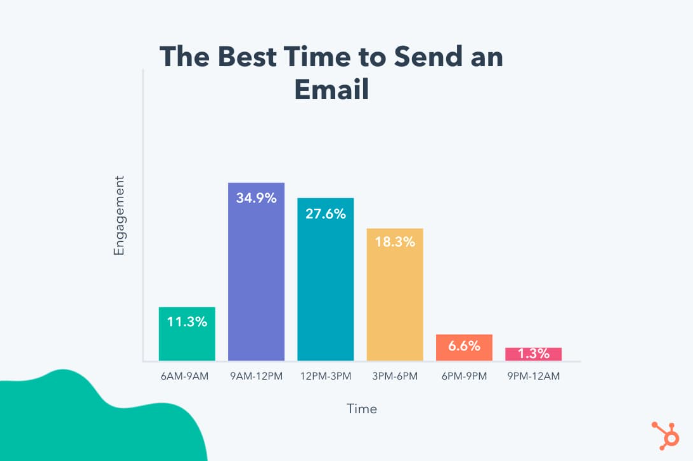
Once you’ve determined which times work best within your industry, it’s time to A/B test your brand email timing. This way, you can cater exactly to your customer base. Factors like frequency can also be A/B tested for your specific brand.
If you can figure out exactly when your customers are most receptive to your outreach efforts, your emails are going to generate much better KPIs like click-throughs and conversions. If you’re able to determine the optimal frequency, you can reduce unsubscribe rates and avoid being seen as spam by your customers.
Maintaining Your Position in Your Target Audience's Inboxes
Every company is different, so finding your way forward might take some trial and error. In fact, A/B testing is all about trial and error.
The tiny tweaks you make to your email layout are proven to make a big difference. So, start by taking a look at your next template with a critical eye. Really tune into your customer. What email subject line would you click on? Why not test out something new? Questions like these can help you get creative with your next campaign.
Of course, you can use email strategies to get ahead of the competition. Although, maintaining your position in your customers’ inboxes requires keeping current with the latest insider information. The CMO is your curated guide to the latest news, technology, trends, and insights into the marketing industry.
Click here to subscribe to The CMO newsletter or browse through our comprehensive catalog of marketing solutions.


